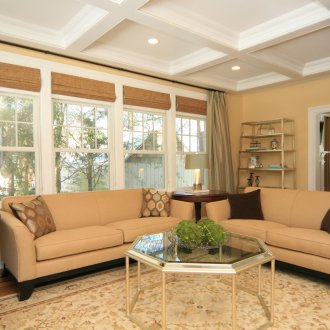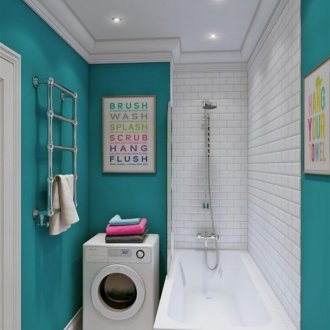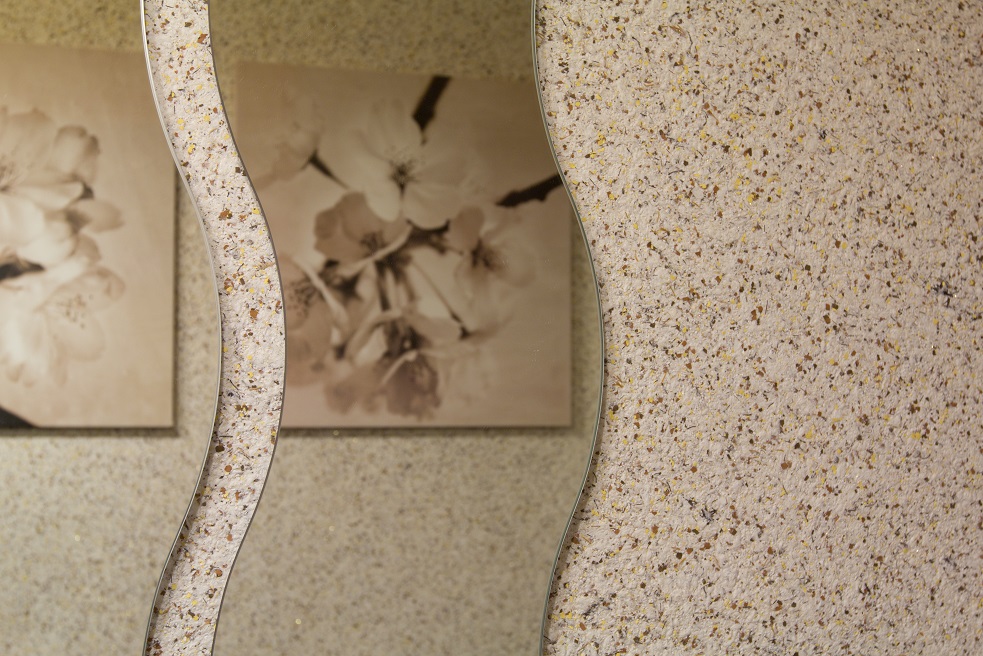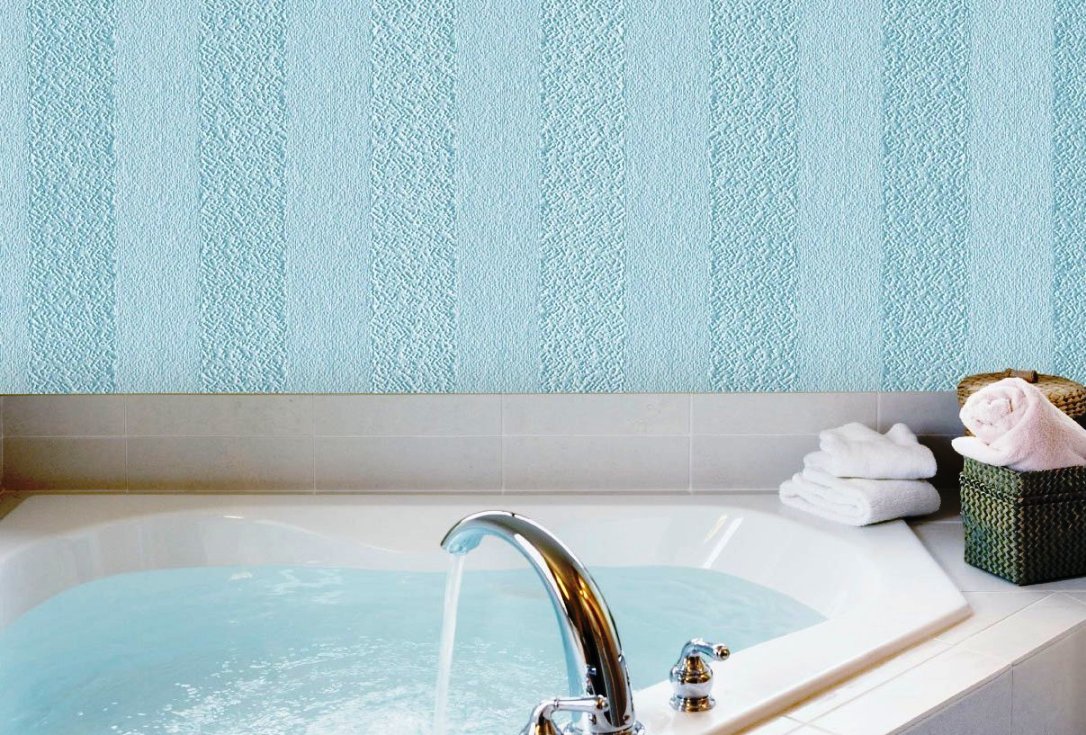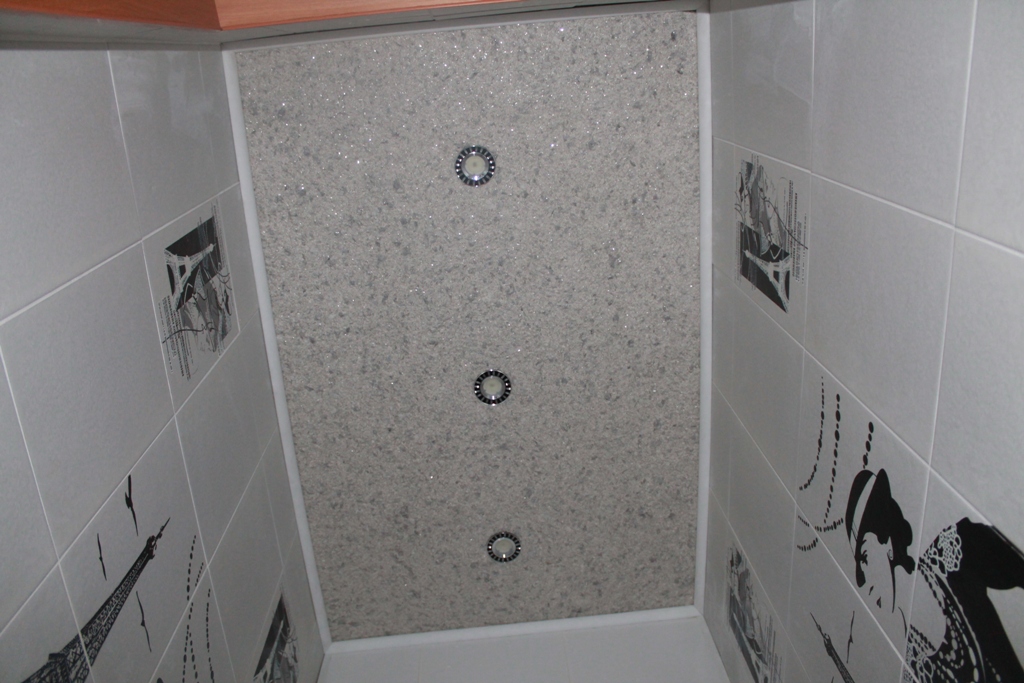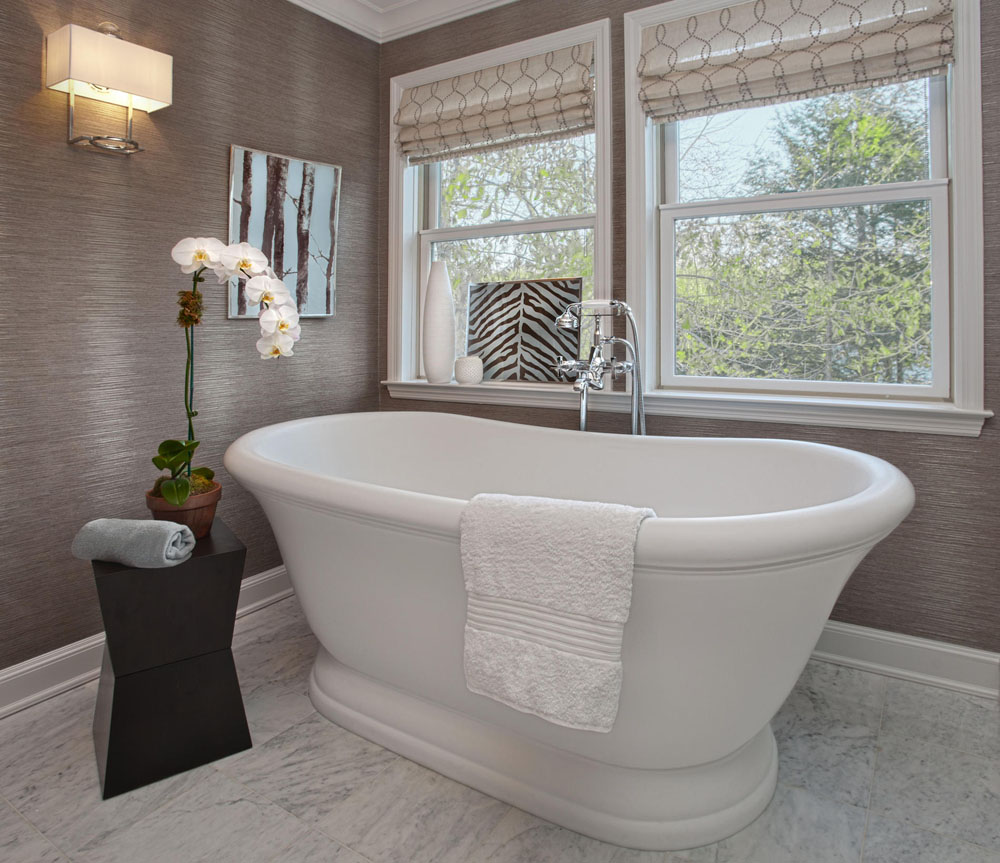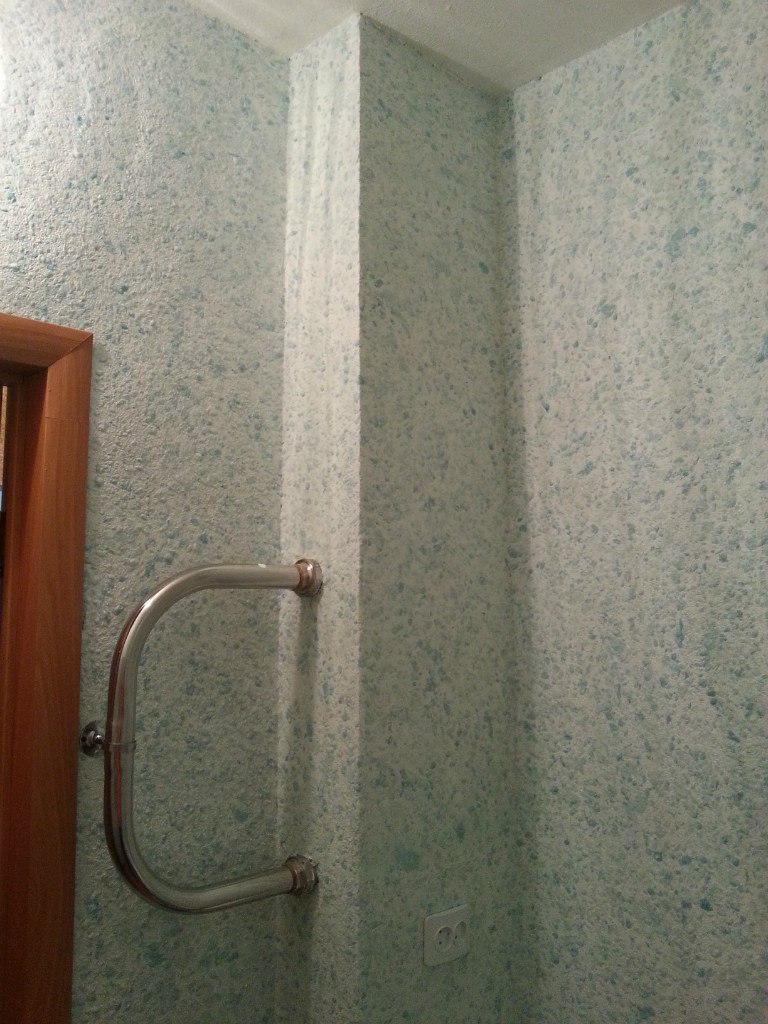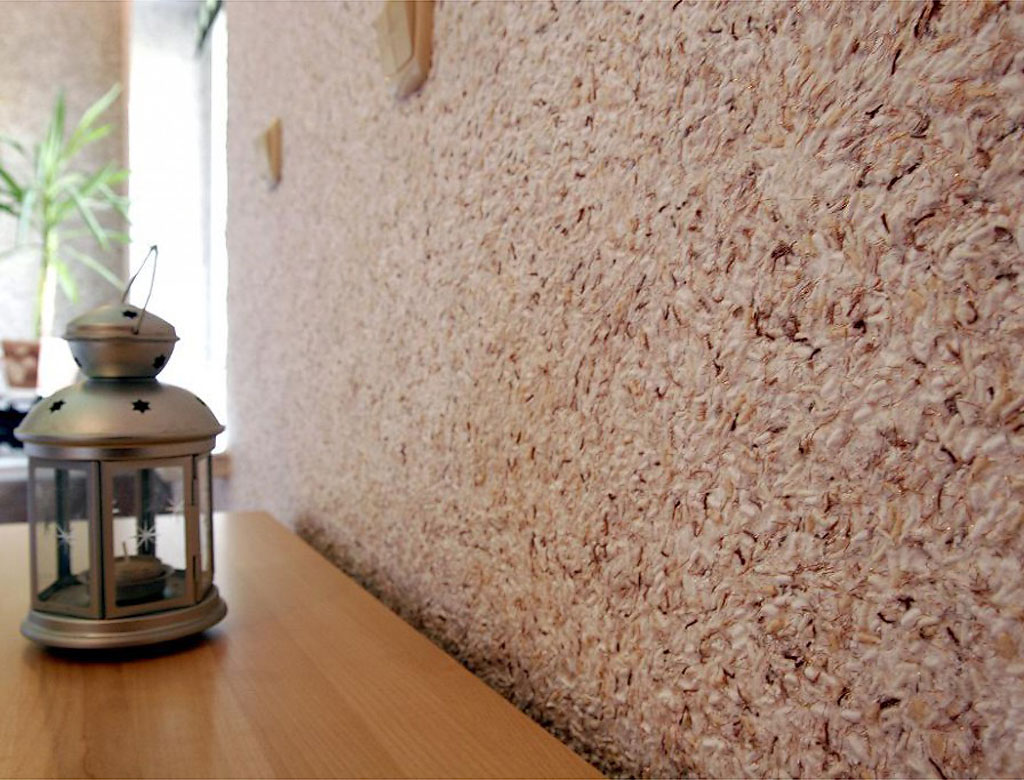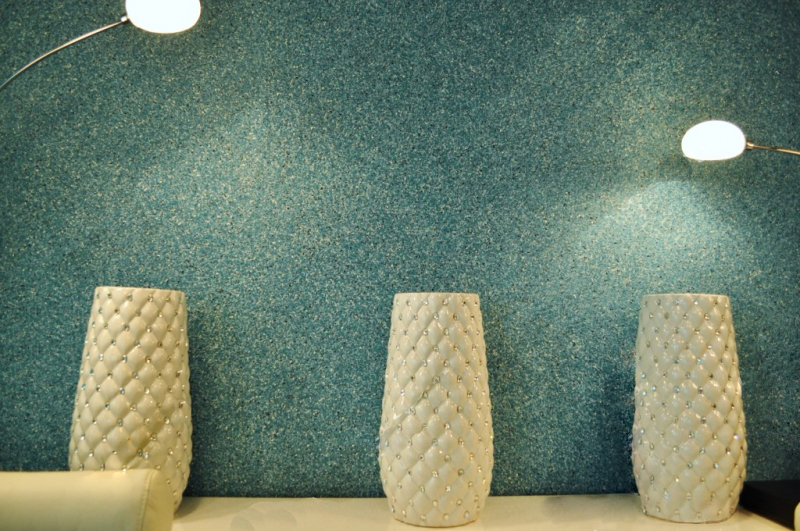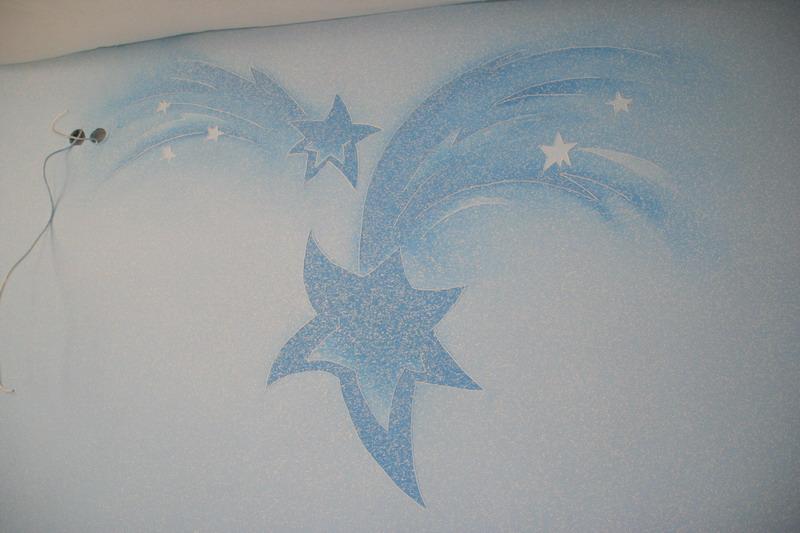Liquid wallpaper in the bathroom (20 photos)
Content
For the design of the walls of the bathroom, the use of ceramic tiles has already become traditional. It has established itself as a reliable and durable material, and it seems that there is no replacement for it. However, technology does not stand still. To diversify the interior will help liquid wallpaper in the bathroom, which are produced according to the latest industry achievements in the field of building materials. Their properties allow you to expand the scope of such wallpapers and change the design of any room.
First meeting
Liquid wallpaper is a plaster, the main component of which is cellulose. She gave the right to this material to be called wallpaper. Supplied in powder form. The color of the composition depends on the dye used. In addition to it, components from cotton and textile fibers are included. Also, the composition may contain dry algae, tree bark, mica, etc.
As soon as liquid wallpaper for the bathroom appeared on the construction market, they did not gain much popularity. The first batches were made mainly from cellulose fibers. To increase the service life an additional coating was required with a layer of varnish. Otherwise, such a plaster could last a couple of months. Without varnish, the wallpaper intensely absorbed moisture and took on an untidy appearance. This property of the new finishing material could not leave positive feedback about itself.
However, the design idea does not stand still and, taking into account the experience of previous mistakes, a new composition of special mixtures was developed. Now he is not afraid of not only water splashes and water vapor, but also temperature differences.
Today, liquid wallpaper is a special powder packaged in plastic bags. To use it, just add a little water and mix well.
Decorative possibilities of the material
A big advantage is the choice of different decor options. When using ordinary wallpaper, there is only one choice - the color and quality that you bought, but in front of liquid wallpaper there is a wide field for experiments. You can change the colors, play with color.
The easiest way is to finish the walls in the bathroom with one color. However, nothing prevents, if the color gets bored over time, apply a new mixture with mosaic elements. Although most often they use one powder, but changing it to different colors.
Bright colors will help to create stylish jewelry in the form of stripes, geometric patterns or even paintings. To do this, on the prepared surface of the walls, it is enough to draw the contour of the future pattern, and then decorate it with a composition of different colors.
The stucco effect on the walls is achieved by using special rollers on a two-layer coating. The first composition is applied in a thin layer. And the second layer, thicker, is rolled with a relief roller.
Types of liquid wallpaper
Before you ask whether it is possible to use liquid wallpaper, it is better to find out what they are.
- The basis of "silk" wallpaper is silk fibers. They are considered the highest quality due to their long life and resistance to sunlight. Such coverage is very expensive.
- The closest competitor to silk coating is cellulose wallpaper. They are significantly inferior to silk in quality and appearance, but they are the cheapest of the entire line of materials.
- The middle option is silk-cellulose wallpaper.
Also, liquid wallpaper in the bathroom can be divided into two categories:
- Packaged in bags and almost ready for use. You just need to add water.
- As a base for painting. There is only one color - white. Professionals, using various dyes, achieve a variety of shades.
The advantages of such material
Many still, despite the fact that liquid wallpaper for the bathroom are successfully used in interior decoration, prefer time-tested decorative materials. Although the first is easier to care for: dirt, dust, mold can easily be removed from such a surface.
As a decoration material, liquid wallpaper in the bathroom looks very appropriate. Despite their novelty and unusualness, they quickly gained popularity and came into use in the decoration of various rooms. If the interior is successfully chosen for such wall decoration, then any room can be made unique and one of a kind.
The advantages of such plaster include:
- Durability;
- Environmental friendliness;
- Antistatic;
- Elasticity;
- Soundproof;
- Heat resistance;
- Maintainability .;
- Resistance to light.
Few cons
Despite such remarkable properties, liquid wallpaper in the bathroom has several disadvantages:
- High-quality moisture resistant material is expensive.
- The preparatory phase is quite laborious. In order for the material to hold firmly on the walls, it is necessary to go through several stages: puttying small cracks, sanding, applying a primer. If you skip one type of work, in the end you can get a different shade in the finish or in general the whole surface will become stained.
- Patience and minimal experience with a tool such as a putty knife are required.
- There is a high probability of fake. The quality of the material will appear only after the mixture is prepared and applied to the wall.
Glue liquid wallpaper on the wall
The whole process is divided into several stages: preparing the walls, preparing the mortar, applying liquid wallpaper.
Wall preparation
- Nails, screws, dowels, as well as metal and plastic embedded parts are removed.
- All defects, pits, holes and small cavities larger than 2 mm are removed.
- The surface of the walls is primed with a standard deep penetration primer. It is applied in 2-3 doses with a break of 3 hours.
Solution preparation
Finishing mixture is poured into a container of a suitable size. Strictly according to the recipe indicated on the package, water is added. The solution is thoroughly mixed. It is important to fluff the solution so that no clumps remain. The resulting mixture must be maintained for a specified period of time: from 6 to 12 hours and only after that the solution can be used. To speed up the process, the preparation of the mixture can begin at the stage of priming the walls.
Application of liquid wallpaper
To apply liquid wallpaper in the bathroom, you need tools:
- trowel;
- plastic grater;
- construction spatula;
- spray gun.
The process itself is similar to putting putty on the walls. A spatula from the container collects a portion of the solution, is applied to the wall and is rubbed with a grater on it with a layer of 2-3 mm thick. It is better to apply the solution in small areas to the already treated wall area. The plastic grater should be held so that its front edge rises by a small angle of 5º-15º relative to the wall. No great effort is required; the main thing is to maintain the required thickness.
After approximately 1 m² is filled, you can use a plastic grater dipped in water to smooth the finishing area so that no furrows remain. Then the next section of the wall is processed.
If after work the entire solution could not be consumed, it can be saved. The finished decorative mix can be stored for two weeks in a well-tied plastic bag. It can be useful if, after drying of the finishing material, minor flaws are found.
